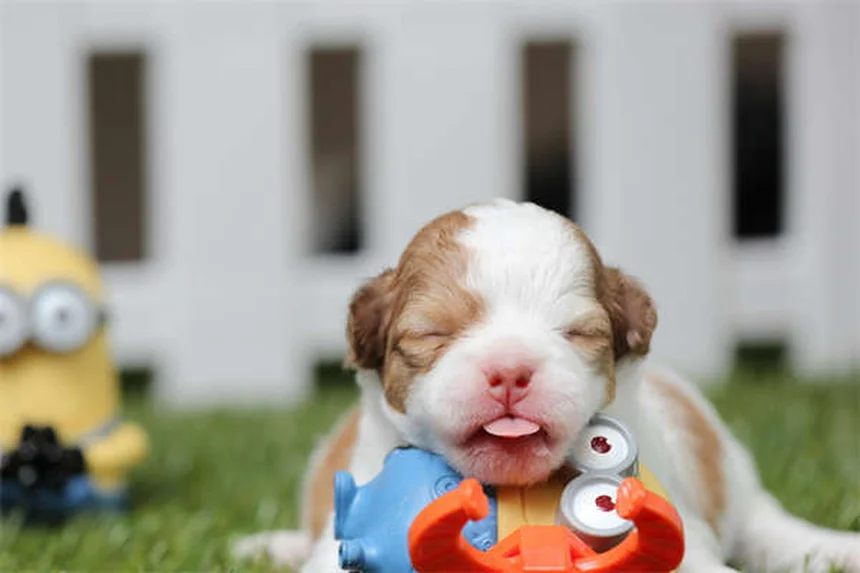Why are my cat's gums red? The answer is: red gums in cats often signal serious health issues that need immediate attention! As a cat owner myself, I've learned that our feline friends are experts at hiding pain - that's why their gum color becomes so important. Healthy cat gums should be bubblegum pink, not dark red or inflamed. You might be surprised how many conditions can cause this change - from dental disease to life-threatening heatstroke. I remember when my neighbor's cat, Mr. Whiskers, developed bright red gums. Turns out he had stomatitis, a painful condition affecting his entire mouth. The good news? When caught early, most causes of red gums can be treated successfully. In this article, we'll walk through exactly what to look for and when to call your vet.
E.g. :How to Brush Your Puppy's Teeth: 5 Simple Steps for Healthy Dog Dental Care
- 1、Why Your Cat's Gum Color Matters More Than You Think
- 2、The Surprising Reasons Behind Those Red Gums
- 3、How Vets Play Detective With Red Gums
- 4、Treatment Options: From Simple to Serious
- 5、Prevention Is Better Than Treatment
- 6、The Hidden Language of Cat Gums
- 7、Nutrition's Surprising Role in Oral Health
- 8、The Emotional Side of Feline Dental Health
- 9、When to Seek a Second Opinion
- 10、FAQs
Why Your Cat's Gum Color Matters More Than You Think
The Silent Alarm System in Your Cat's Mouth
You know how cats are masters at hiding pain? That's exactly why we need to pay extra attention to their gum color. Healthy gums should look like bubblegum pink - not too pale, not too red. When those gums turn dark pink or red, it's like your cat's personal warning light flashing "Check Engine!"
Here's something interesting - did you know the pattern of redness tells different stories? Small pinpoint bruises versus redness just at the gumline can indicate completely different health issues. I always tell my friends to think of it like reading tea leaves, but for cat health! The sooner you spot these changes, the quicker you can get your feline friend the help they need.
When to Sound the Alarm
Immediate vet attention is needed if you notice any of these with red gums:
- Excessive drooling (more than usual cat weirdness)
- Refusal to eat for more than 12 hours
- Visible pain when touching their face
- Bad breath that could knock you over
The Surprising Reasons Behind Those Red Gums
 Photos provided by pixabay
Photos provided by pixabay
Dental Drama: Gingivitis and Stomatitis
Imagine never brushing your teeth for years - that's basically what happens with cats who develop gingivitis. The plaque builds up, bacteria throw a party, and suddenly your cat's gums are redder than a lobster sunburn. About 70% of cats show signs of dental disease by age 3, which is crazy when you think about it!
Now stomatitis is like gingivitis's angry big brother. The whole mouth gets inflamed - gums, tongue, even the roof of their mouth. My neighbor's cat had this, and poor Mr. Whiskers stopped grooming himself because it hurt so much. That's when you know it's serious - a cat not grooming is like a teenager not checking their phone!
| Condition | Affected Area | Pain Level |
|---|---|---|
| Gingivitis | Gumline only | Moderate |
| Stomatitis | Entire mouth | Severe |
Beyond the Mouth: Systemic Health Issues
Here's where it gets really interesting - red gums can signal problems far beyond dental health. Conditions like feline leukemia, kidney disease, or diabetes often show up in the mouth first. It's like your cat's gums are the dashboard showing all the warning lights for their whole body.
Did you know heatstroke can turn gums red too? Cats are terrible at cooling down - they don't sweat like we do, and panting is rare. That's why during heat waves, I always make sure my cat has cool tiles to lie on and plenty of water. Last summer, I caught my cat sprawled in front of the AC like it was her personal throne!
How Vets Play Detective With Red Gums
The Initial Investigation
When you bring your cat in for red gums, the vet becomes Sherlock Holmes. They'll ask about everything from your cat's eating habits to whether they've been exploring the garage (hello, potential toxins!). Then comes the physical exam - checking not just the mouth but the whole body for clues.
Here's a pro tip: Before your appointment, jot down any weird behaviors you've noticed. Even something like "has been sleeping in the sink more" could be important. I keep a "cat diary" in my phone notes - it sounds silly until it helps diagnose a health issue!
 Photos provided by pixabay
Photos provided by pixabay
Dental Drama: Gingivitis and Stomatitis
Modern vet medicine is amazing. They might run:
- Blood tests that check 20+ different health markers
- Special dental X-rays that show what's happening under the gums
- Viral tests that work like a pregnancy test - but for cat diseases
Ever wonder why they need so many tests? Because red gums are like a mystery novel with multiple possible endings. The tests help rule out the wrong scenarios to find the true culprit.
Treatment Options: From Simple to Serious
The Dental Spa Experience
For gingivitis, your cat gets what I call "the full dental spa treatment" - professional cleaning under anesthesia, possible tooth extractions, and sometimes even antibiotics. It's not exactly a day at the pet resort, but the difference it makes is incredible. My friend's cat went from grumpy to purring machine after treatment!
Stomatitis often needs more aggressive care. Sometimes removing all the teeth sounds extreme, but cats adapt amazingly well. They can still eat dry food (yes, really!) and often feel so much better without those painful teeth. It's like finally taking off shoes that have been two sizes too small!
When It's More Than Just Teeth
If an underlying illness is causing the red gums, treatment becomes a two-pronged approach:
- Managing the primary condition (like kidney disease or diabetes)
- Providing dental care to relieve mouth pain
Heatstroke and toxin cases need emergency care - think IV fluids and intensive monitoring. The key is getting to the vet FAST. I keep my vet's emergency number saved in my phone and posted on the fridge, just in case.
Prevention Is Better Than Treatment
 Photos provided by pixabay
Photos provided by pixabay
Dental Drama: Gingivitis and Stomatitis
Brushing your cat's teeth sounds about as fun as wrestling an alligator, right? But start slow - let them lick toothpaste off your finger, then gradually introduce a toothbrush. There are even finger brushes that make it easier. My trick? I do it during their post-meal grooming session when they're already in cleaning mode.
Other prevention tips:
- Dental treats that actually work (look for the VOHC seal)
- Water additives that fight plaque
- Regular vet check-ups - at least once a year
Creating a Safe Environment
Poison-proofing your home is crucial. Did you know common houseplants like lilies can be deadly? I replaced all my toxic plants with cat-safe alternatives. For heat safety, I set up cooling mats and make sure there's always a cool, shaded spot available.
Remember, your cat depends on you to notice when something's wrong. Those red gums are their way of asking for help - and now you know exactly how to respond!
The Hidden Language of Cat Gums
What Other Gum Colors Can Tell You
While we've focused on red gums, did you know your cat's mouth can display a whole rainbow of concerning colors? Pale or white gums often indicate anemia or blood loss - it's like their body's way of waving a white flag. I once noticed this in my cat after she got into a fight, and that quick observation probably saved her life!
Blue or purple gums are the scariest to see - they scream oxygen deprivation. This happened to my neighbor's Persian cat during a respiratory infection. The vet explained it's like when humans get altitude sickness, except cats don't have the option to come down the mountain! Any gum color that isn't bubblegum pink deserves attention, but these particular shades mean drop everything and get to the vet immediately.
The Gum Check Routine Every Owner Should Know
Here's my foolproof method for checking gums that even works with grumpy cats: Wait until they're sleepy (but not fully asleep), gently lift the upper lip, and quickly assess. Do this weekly to establish what's normal for your cat. Pro tip: The gums above the canine teeth are easiest to see without getting bitten!
Make it part of your regular grooming routine. I pair gum checks with nail trims - my cat expects treats after both, so she tolerates them better. Remember, consistency is key. It's like checking your car's oil - skip it too many times, and you might regret it later!
Nutrition's Surprising Role in Oral Health
How Diet Affects Those Gums
You are what you eat applies to cats too! Dry food gets a bad rap, but the right kibble can actually help scrape plaque off teeth. I switched my cat to a dental formula food, and her next vet visit showed noticeably less tartar buildup. But here's the catch - it's not magic. You still need other dental care, just like brushing your teeth after eating cereal doesn't make up for never flossing!
Raw food diets are controversial for gum health. Some swear by it, but my vet warned me about bacterial risks that could actually worsen mouth inflammation. We compromised with high-quality wet food that has added dental benefits. Finding the right balance is like creating the perfect playlist - it takes some trial and error!
Supplements That Support Healthy Gums
Omega-3 fatty acids aren't just good for shiny coats - they reduce inflammation throughout the body, including the gums. I add a fish oil supplement to my cat's food, and she licks the bowl clean every time. Other helpful additions include:
- Probiotics (the good bacteria fight the bad mouth bacteria)
- Vitamin C (in proper doses - too much can cause issues)
- Coenzyme Q10 (helps gum tissue repair itself)
Always check with your vet before starting supplements. I learned this the hard way when my "harmless" herbal remedy made my cat's gums even redder! Now I run everything by our vet first - better safe than sorry.
The Emotional Side of Feline Dental Health
How Pain Changes Your Cat's Personality
Ever notice how you get cranky with a toothache? Cats experience the same thing, but they're masters at hiding it. My normally affectionate cat became distant when her gums hurt - no more headbutts or lap sitting. At first I thought she was mad at me, until the vet found her dental issues. The moment her mouth felt better, my sweet girl returned!
Watch for subtle signs like decreased grooming or avoiding hard toys. These are red flags in cat language. I keep a checklist on my fridge to track my cat's normal behaviors - when something changes, I know to investigate further. It's like being a detective, but the clues are hairballs and toy preferences!
Building Trust Around Mouth Care
Getting your cat comfortable with mouth inspections takes patience. Start by rewarding any tolerance of face touching - even one second counts! I used clicker training to teach my cat that gum checks mean treats. Now she actually lifts her lip on command (most days).
For resistant cats, try these tricks:
- Use tuna juice instead of water to make dental rinses appealing
- Wrap them in a towel "purrito" style for safety
- Schedule mouth care after play when they're tired
Remember, forcing it will only create more stress. My first attempts looked like a WWE match until I learned to go slow. Now our dental routine is almost peaceful (emphasis on almost)!
When to Seek a Second Opinion
Red Flags in Dental Diagnoses
Not all vets have equal dental expertise. If your gut says something's off with the diagnosis, listen to it! I once had a vet dismiss my concerns as "just gingivitis," but the dental specialist found severe stomatitis needing immediate treatment. Trust your instincts - you know your cat best!
Consider a veterinary dentist if:
- Problems persist after treatment
- Your regular vet seems unsure
- Multiple extractions are recommended
Specialists have tools like dental cameras that show every angle of those tricky back teeth. It's the difference between a regular checkup and a CAT scan for your cat's mouth!
Understanding Treatment Costs
Dental care isn't cheap, but skipping it costs more long-term. I created this comparison after my cat needed extensive work:
| Option | Cost Range | Long-term Outcome |
|---|---|---|
| Basic Cleaning | $200-$400 | Prevents bigger issues |
| Multiple Extractions | $800-$1500 | Solves current pain |
| No Treatment | $0 upfront | Leads to $3000+ emergency |
Payment plans and pet insurance can help. I budget $50 monthly for my cat's health fund - it adds up fast and prevents financial panic when care is needed. Think of it like a dental savings account for your furry friend!
E.g. :Red Gums in Cats | PetMD
FAQs
Q: How can I tell if my cat's red gums are serious?
A: You should immediately contact your vet if you notice red gums along with other warning signs like excessive drooling, refusal to eat, or bad breath. As someone who's been through this with my own cat, I can tell you that timing matters. The pattern of redness tells a story too - small pinpoint bruises might indicate poisoning, while generalized redness often points to dental disease. Don't wait to see if it gets better on its own. I always tell my friends: "When in doubt, check it out!" Your vet can perform tests to determine if it's simple gingivitis or something more serious like kidney disease.
Q: Can I treat my cat's red gums at home?
A: While some mild cases might improve with dental care, most causes of red gums require professional treatment. I learned this the hard way when I tried home remedies for my cat's gingivitis - it just delayed proper care. Your vet might recommend professional cleaning, tooth extractions, or medication depending on the cause. For heatstroke or poisoning, every minute counts - get to the vet immediately. That said, you can support your cat's recovery by following your vet's instructions precisely and maintaining good oral hygiene at home with vet-approved products.
Q: How often should I check my cat's gum color?
A: I make it a habit to check my cat's gums once a week during our cuddle sessions. Lift their lip gently when they're relaxed - morning snuggles work great for this. Look for that healthy pink color (not too pale, not too red). Think of it like checking your car's oil - regular monitoring helps catch problems early. Since cats hide illness so well, these quick checks might be the only warning you get before a small issue becomes serious. Pro tip: Take a photo of healthy gums when your cat is well, so you have a reference point for comparison.
Q: Are some cats more prone to red gum problems?
A: Absolutely! Through my years of cat ownership and research, I've found that older cats, flat-faced breeds (like Persians), and those with chronic illnesses are at higher risk. My vet explained that about 70% of cats show dental disease signs by age 3. Cats with FIV or FeLV are especially vulnerable to mouth inflammation. Even the season matters - summer brings heatstroke risks. The key is knowing your cat's specific risks and being extra vigilant. For example, if you have a senior cat, you might want to check gums twice weekly.
Q: What's the best way to prevent red gums in cats?
A: Prevention starts with daily dental care and regular vet check-ups. I've trained my cat to tolerate tooth brushing by making it a positive experience with tasty toothpaste. Dental treats with the VOHC seal help too. Beyond oral care, cat-proof your home against toxins and provide cool areas in hot weather. Remember, prevention isn't just about avoiding vet bills - it's about keeping your feline friend comfortable and happy. As I always say, "An ounce of prevention is worth a pound of cat treats!"

